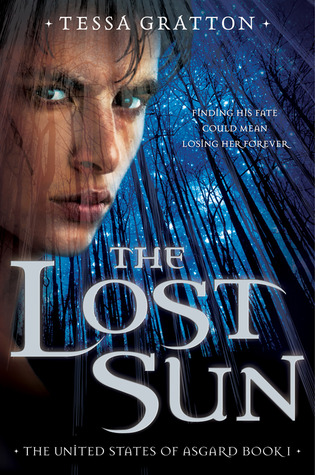 Taking a break from all things fairy tale to read some other books. This past week I read three books at three different levels! At the Young Adult level, is "The Lost Sun" by Tessa Gratton. This is the first in a series entitled The United States of Asgaard - and yes, it is steeped in Nordic Mythology. It's not dystopian - more a parallel universe type of book. It was an interesting read and comparisons to Neil Gaiman's "American Gods" are apt though this is a much (MUCH) tamer version. It is also a bit more focused on teaching the reader the basics of Nordic mythology. And lots and lots and lots of teenage angst. I found it a bit slow at the beginning but it picks up once the quest to find Baldur truly gets underway. And I think Glory is my favorite character. She definitely shakes things up a bit. It will be interesting to see where #2 goes
Taking a break from all things fairy tale to read some other books. This past week I read three books at three different levels! At the Young Adult level, is "The Lost Sun" by Tessa Gratton. This is the first in a series entitled The United States of Asgaard - and yes, it is steeped in Nordic Mythology. It's not dystopian - more a parallel universe type of book. It was an interesting read and comparisons to Neil Gaiman's "American Gods" are apt though this is a much (MUCH) tamer version. It is also a bit more focused on teaching the reader the basics of Nordic mythology. And lots and lots and lots of teenage angst. I found it a bit slow at the beginning but it picks up once the quest to find Baldur truly gets underway. And I think Glory is my favorite character. She definitely shakes things up a bit. It will be interesting to see where #2 goes
For the elementary level readers - "Madame Pamplemousse and Her Incredible Edibles" by Rupert Kingfisher, Illustrated by Sue Hellard. This was a wonderful little book - and it's the first in a series. There are three so far. If you enjoy Roald Dahl and Lemony Snicket, these should appeal also! Our protagonist, Madeleine, does have parents but they don't seem to care for her at all! Every summer they send her off to spend time with her cruel and greedy Uncle Lard who runs a restaurant, the Squealing Pig. Here she is forced to work in the kitchen scrubbing all the pots and pans and dishes. She also discovers that she has quite a gift for cooking. One day, while running an errand to procure some disgusting pate that her uncle adores, she mistakenly enters the Edibles shop of the mysterious Madame Pamplemousse and the rest, as they say, is history. This would be a great read-aloud for 3rd/4th graders. There's a bit of a mystery to the story and the creations that line the shelves of Mme. Pamplemousse's shop are enough to intrigue any child! Pate of North Atlantic Sea Serpent, Violet Petal Wine, Salt-Cured Raptor Tails, Cobra Brains in Black Butter... What a fun activity to have kids create their OWN shelf in the shop and see what concoctions they could come up with. Volume 2 is Madame Pamplemousse and the Time-Traveling Cafe; Volume 3 is Madame Pamplemousse and the Enchanted Sweet Shop.
Last, for adults or teens - Anthony Doerr's "All the Light We Cannot See". Marie Laure is blind and lives in Paris with her father, who works at the National Museum of Natural History. He is the locksmith, the keeper of the keys. He is also a craftsman who builds a replica of their neighborhood so Marie Laure can learn to navigate through the streets. On each birthday, he presents her with a puzzle box. Parallel with Marie Laure's story, we learn about Werner Pfennig, an orphan in Germany. And we are transported from besieged Saint Malo, France to Paris and back again; to Germany and the battlefront. The story spans from pre-WW2 1934 to today. And shows how lives can intertwine and cross in the most amazing ways! The book is very much like one of Marie Laure's father's creations - a puzzle box. Twist this chapter ninety degrees this way, look for the small keyhole into this character's personality, find the barely visible seam so you can pry open this page's hidden details and finally reach the treasure inside. On his choice for a title, Doerr states, "Ultimately, the title is intended as a suggestion that we spend too much time focused on only a small slice of the spectrum of possibility." This is a wonderful, bittersweet, poignant read! Just be prepared - once you start reading, you won't want to put it down.









